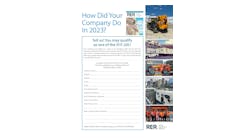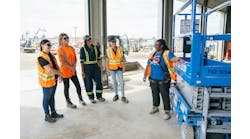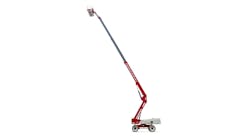Spider, a division of SafeWorks, has completed the final stages of powered access work on the Burlington Bristol Bridge in Philadelphia.
Spanning across the Delaware River to connect the industrial towns of Burlington, N.J., and Bristol, Pa., the truss bridge was in dire need of renovations. The latest inspection revealed extensive wear on all components of the trolley system, some of which dated back to the bridge’s original 1931 completion date.
On site renovations took place nearly 130 feet above the roadway (200 feet above the river) with minimal existing walkways to access the work points. The ST-17 Air Spider allowed access throughout the project and required only a single rigging point.
The scaffold system itself involved the attachment of a series of needle beams, fall protection, and a scaffold hand-controlled system at the tower's top level. By adding flydecks, the crew was able to work the full width of the job without having to reposition the Spider basket, saving valuable time.
Spider equipment allowed rigging to be cleared in 15 minutes so that the project could take place on an active lift span — an essential element to keep the Delaware River's waterway traffic flowing smoothly.
"Spider's equipment worked flawlessly," said Jack DiGiovanna, field engineer at Pennoni Associates Inc., Tacony-Palmyra Bridge Field Office. "At the end of each shift all we had to do was lower the hoisting wire and raise the two safety lines and the bridge was good to go. The top rigging was easy to install, with very adaptable attachment hardware. Safety was never compromised and the production rate was outstanding."
Founded in 1946, Seattle-based Spider, a division of SafeWorks, LLC, is No. 70 on the RER 100.





